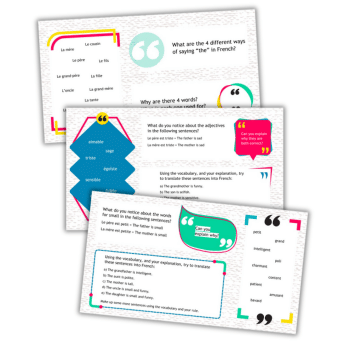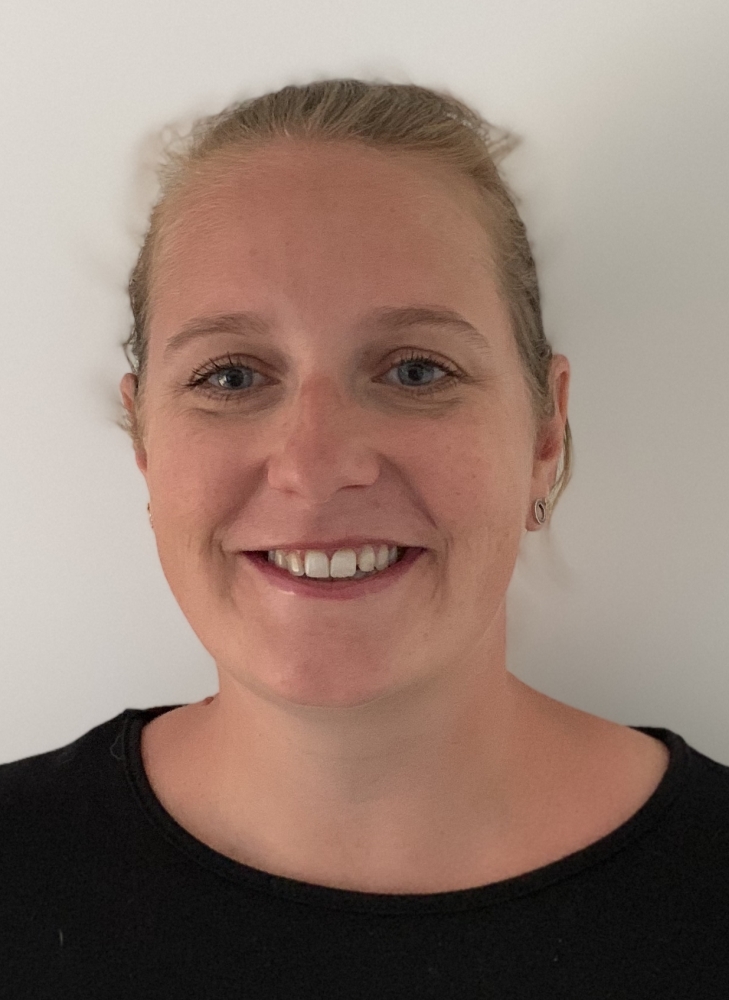MFL – How often do your KS3 MFL students get to talk?

Make that final verbal assessment less onerous by focusing more on speech and pronunciation throughout KS3, advises Jennifer Wozniak-Rush…

In MFL classrooms, speech and pronunciation play a vital role in developing pupils’ language skills.
Yet many pupils may find it challenging to practise these skills within a whole-class context, particularly if they’re sensitive to making mistakes and easily embarrassed. There’s no greater joy in my MFL teaching than hearing pupils speak spontaneously – but how can we instil that level of confidence?
By implementing a series of reliable and consistent strategies we can actively build up pupils’ verbal confidence earlier, so that the final verbal assessment is transformed into something pupils can comfortably take in their stride, rather than something to fear.
Start early
The first step is to create a supportive and inclusive classroom environment that students can perceive from day one of Y7. We should be aiming for a supportive setting in which pupils readily know they’ll never be judged when speaking in the target language.
Encourage your pupils to support and help each other, and emphasise that mistakes are a natural part of the learning process. Aim to promote a positive classroom culture where errors are viewed as learning opportunities, rather than sources of shame or embarrassment.
Ideally, students should be regularly speaking in the target language from the get go. In my experience, it’s vital to create as many opportunities as possible for pupils to speak in each and every MFL lesson.
Begin by teaching pupils the basics of classroom language near the start of Y7, so that they can tell you when they’ve forgotten their book or need to go to the toilet. Start with phrases such as ‘Can I have…?’ and high frequency core language that you can use with the class when doing the register and throughout the lesson.
Plan opportunities for pupils to speak not only to you, but also their peers through the use of pair work activities and/or Kagan strategies such as ‘quiz, quiz, trade’, ‘talking chips’ and ‘think pair share’. This way, pupils can practise saying both the language you’re teaching them, as well as some degree of interaction language, which will do much to develop their spontaneity over time.
As teachers, we can monitor what pupils are saying, how language is being used and how pupils are developing their spoken language skills collaboratively. At the same time, we should be providing appropriate support when needed and correcting misconceptions as they arise.
Provide the opportunity
If we provide pupils with as many opportunities to speak as we can, they will enter KS4 feeling much more confident, making our job considerably easier.
Another way of getting there is to teach pupils chunks of vocabulary that they can reuse in different contexts. Think about those many situations that will crop up regularly and naturally within a typical classroom lesson, and find ways of exploiting these in the target language for linguistic purposes.
From the start, it’s crucial that pupils learn how to produce new sounds as accurately as possible, so try to begin each lesson with a brief, low-pressure speaking activity. As pupils become accustomed to this ritual, they’ll start to feel more comfortable with the expectation of speaking every time – even if it’s just as part of a short, low risk lesson starter.
Lower the pressure
Divide the class into smaller groups or pairs for any activities focusing on verbal communication. When introducing new vocabulary, I’ll first have pupils repeat the words after me. After this, they will then practise said vocabulary with their peers via one of numerous pair work activities. For example:
- One pupil deliberately mumbles one of the new words, and their partner has to guess which one it is
- One pupil performs an action of what a word is referring to. Another pupil has to guess which word it is
- In pairs, pupils take turns saying the words. One writes each word in the air or on the table with their finger. The other pupil has to identify the word in question
Working with fewer of their peers in immediate earshot reduces anxiety levels and will increase pupils’ willingness to actively participate in activities such as role plays, discussions or language games that involve engaging in conversations.
Begin the process with relatively low-stakes speaking tasks, before gradually ramping up the level of complexity and challenge. Start with short, simple prompts, then progress to more extended dialogues or presentations over time.
Doing this lets pupils build their confidence gradually and develop their speaking skills at a manageable pace. We know that the principles of effective speaking practice are modelling through listening; developing speed and accuracy of production through extensive practice; and moving from structured practice to spontaneity.
Establish the benchmark
For pupils to speak spontaneously, we need a lot of structured practice first, using target language as explained previously – but also by regularly using speaking activities with the different topics we teach.
Greg Horton’s ‘Group Talk progression chart’ is a good illustration of how speaking might develop. The aim is for pupils to become more proficient at using the language over time via the following stages:
1: introducing and responding to simple opinions
2: taking part in a short discussion
3: exchanging reasons and preferences / talking across time frames
4: developing a line of thought / sharing points of view / balancing an argument
Demonstrate correct pronunciation, intonation, and fluency regularly so that pupils are provided with a clear benchmark. Encourage pupils to imitate your model and provide constructive feedback to help them refine their pronunciation.
Teaching phonics and practising it regularly will further help to improve pupils’ confidence. How often do you teach phonics, and how often do you revisit it? How have you ensured progression in phonics within your schemes of work?
Celebrate success
Encourage pupils to provide constructive feedback to their peers, focusing on strengths and areas for improvement. I tend to always refer to the same success criteria, so that pupils know what to look for. Self-assessment will meanwhile allow pupils to reflect on their progress, track their development and take ownership of their learning journey.
Be sure to acknowledge and celebrate pupils’ verbal communication achievements. Praise their efforts and any progress or improvements, highlighting specific instances where they have overcome challenges. Recognising pupils’ accomplishments will boost their confidence yet further, and motivate them to continue working on their verbal skills.
If any pupils are still extremely reluctant to speak, props and learning aids may help. Interactive language learning apps, online language exchange platforms and voice recognition tools can all support additional practice outside the classroom. They enable students to build confidence at their own pace.
You could, for example, set a homework activity where pupils are tasked with using Snapchat to record themselves answering questions ‘as’ a dog or a broccoli. Alternatively, pupils could use Flipgrid, Padlet or Vocaroo to record their spoken answers to questions you’ve set. After this you could provide personalised feedback on their pronunciation and vocabulary use.
You could take this further by inviting students to create videos describing themselves, their town or school. You could then send these to partner schools abroad. This gives the activity a real and easily recognised purpose.
By implementing these reliable and consistent methods throughout KS3, MFL teachers can empower pupils to take the final verbal assessment in their stride. Through the careful nurturing of pupils’ verbal confidence, we can help them develop lifelong language skills.
8 steps to more confident speakers
- Create a supportive and inclusive classroom environment
- Encourage pupils to speak from day one of Y7
- Make frequent use of small group and pair activities
- Devise scaffolded speaking tasks
- Model and demonstrate the kind of speaking proficiency you expect to see
- Utilise peer feedback so that students can support each other. Use self-assessment so that they can track their own progress over time
- Maintain students’ motivation to continue by regularly celebrating any successes and signs of genuine progress
- Employ the use of various props and online learning sites to support any students who may be struggling
Jennifer Wozniak-Rush (@MissWozniak) is an assistant headteacher for teaching and learning, and an SLE in MFL








